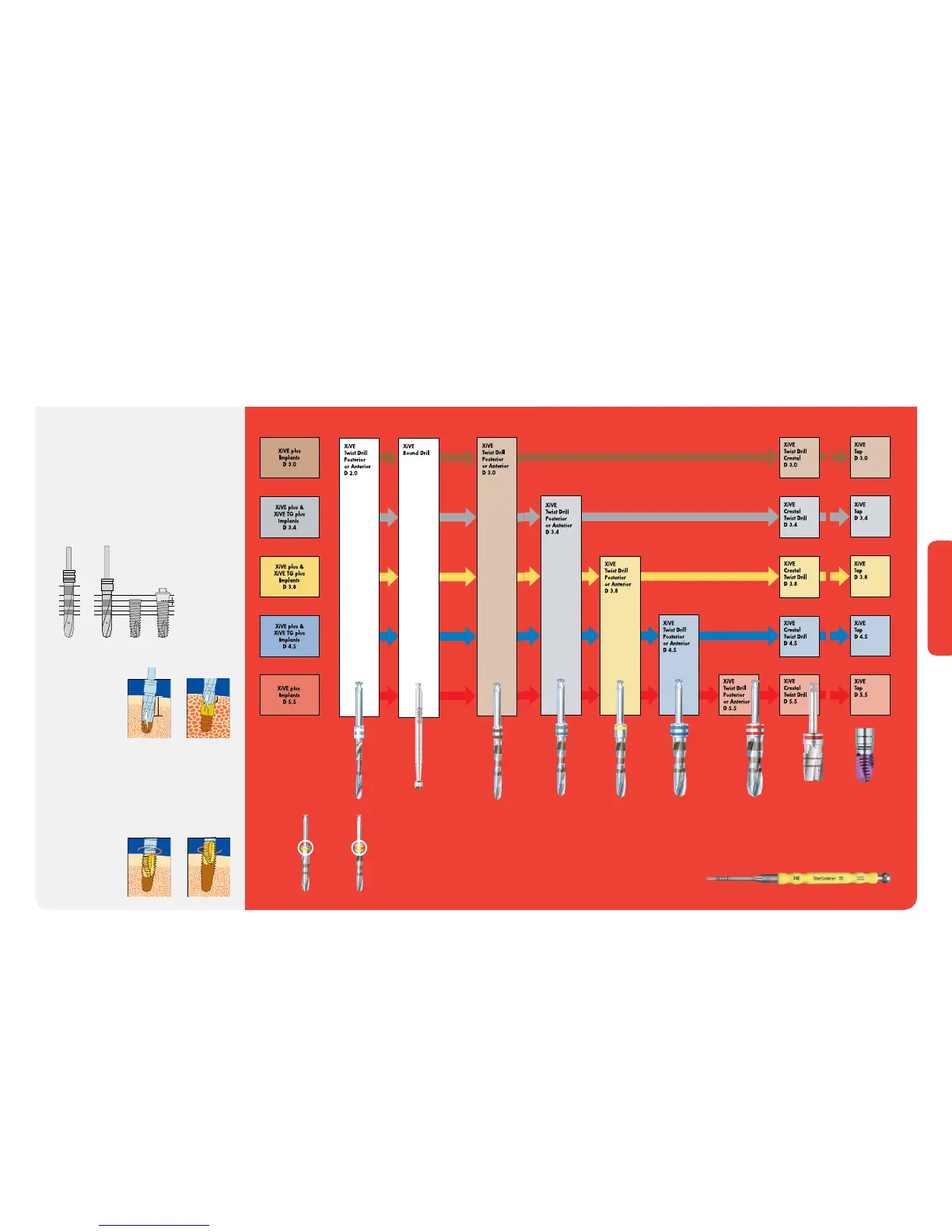Crestal Preparation
Utilize the XiVE Crestal
Twist Drill to control the
amount of implant internal
condensation.
XiVE Crestal Twist Drill
The crestal drill depth preparation ranges from 2 mm to 6 mm
based on the bone quality, allowing optimal primary stability of
the implant to be reached.
1312
XiVE S
L 13
XiVE TG
L 13
Twist Drill
Posterior
Twist Drill
Anterior
Instruments for Implant Placement
THE XiVE DRILL SEQUENCE
Pilot Hole:
XiVE D 2.0 Twist Drill (Posterior or Anterior).
Marking:
XiVE Round Drill
Preparation of the Implant Site:
XiVE Twist Drills (Posterior or Anterior): Start with D 3.0 and
increase in diameter until the final implant diameter is reached.
DI and DII Bone
Posterior:
1 Groove
Anterior:
2 Grooves
Bone D I - D III:
Up to 6 mm
Bone D IV:
Up to 2 mm
Pre-Tapping the Implant Thread:
In very dense cortical bone, pre-tapping the implant site is
required in the crestal
area after the initial 6 mm
deep Crestal twist drill
preparation. The XiVE
Tap is used to reduce
the crestal torque levels
during implant insertion.
Pre-Tapping the Implant Site in DI and DII Bone
XiVE BoneCondenser:
In cases of poor bone quality, XiVE BoneCondensers can be
used for lateral and apical implant site condensation. This
improves bone density to enhance primary implant stability.
XiVE
®
plus
Implant System

